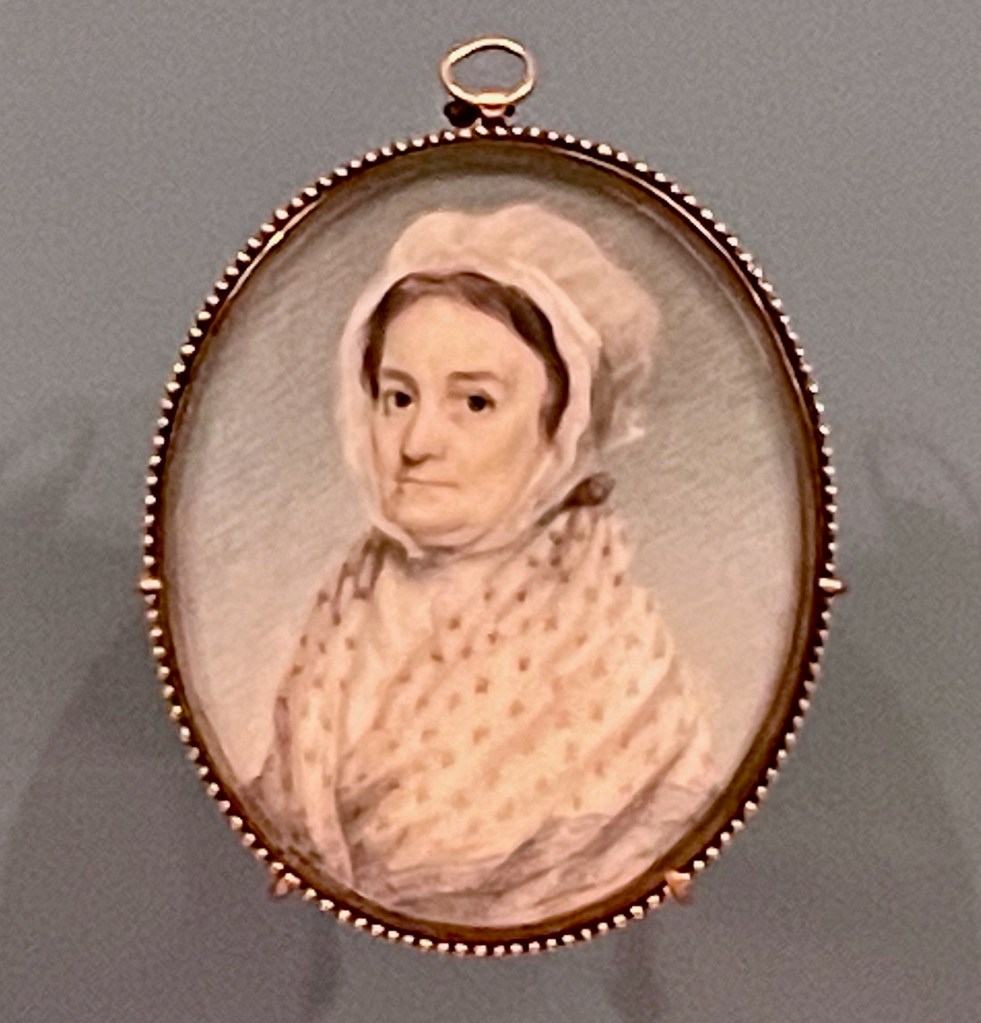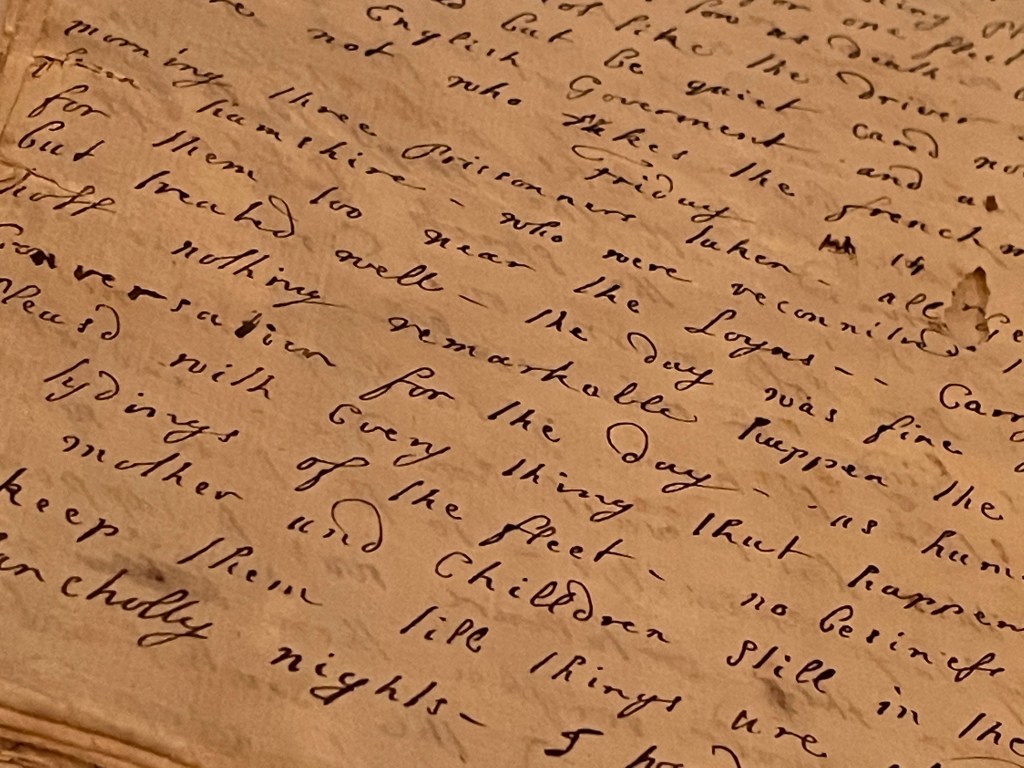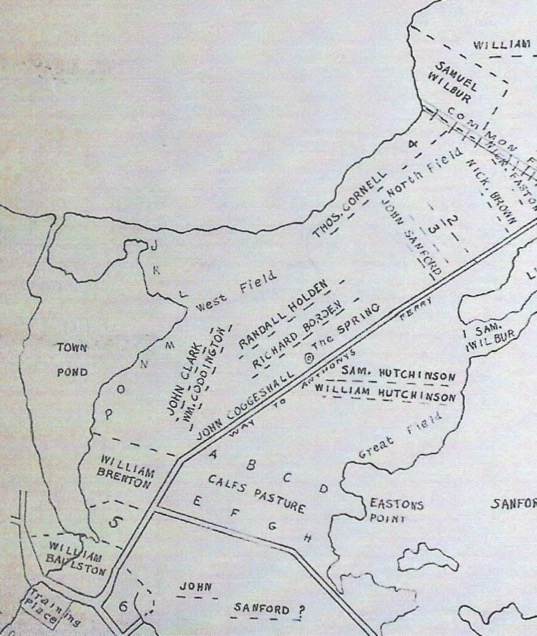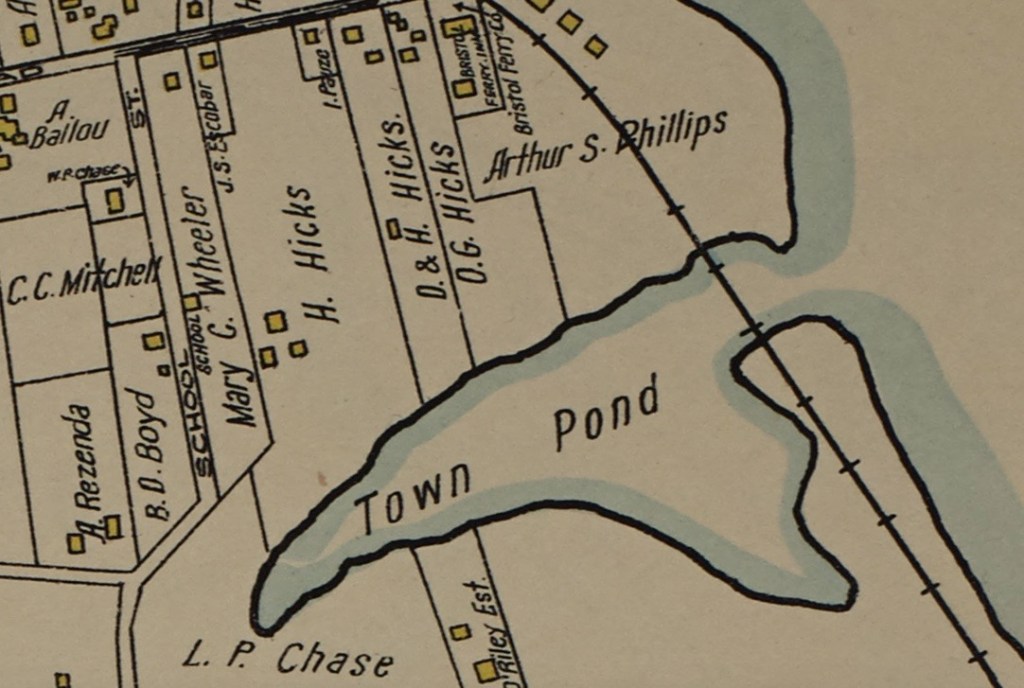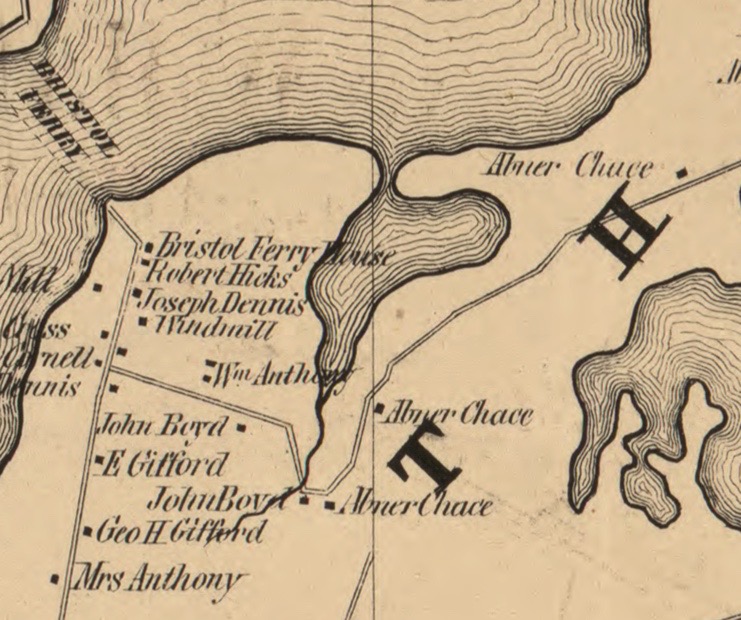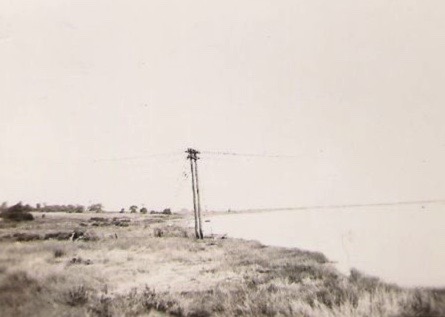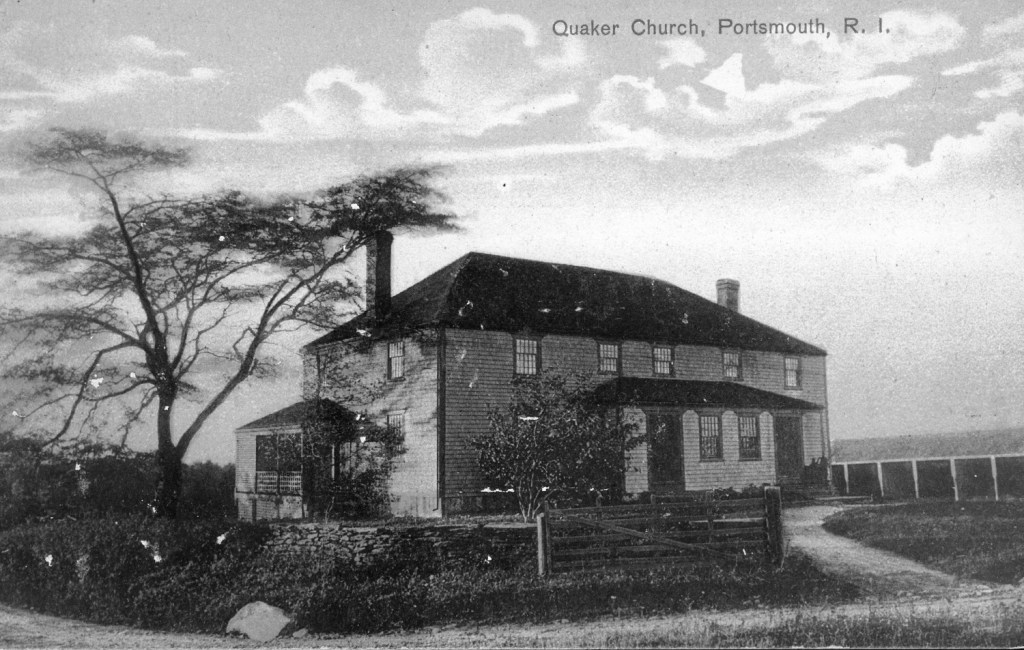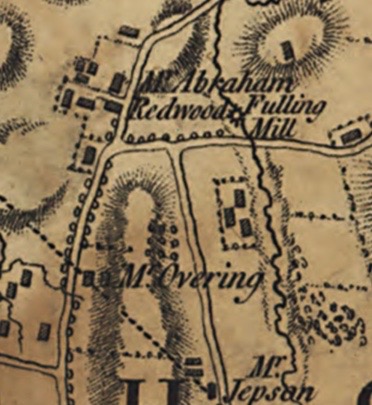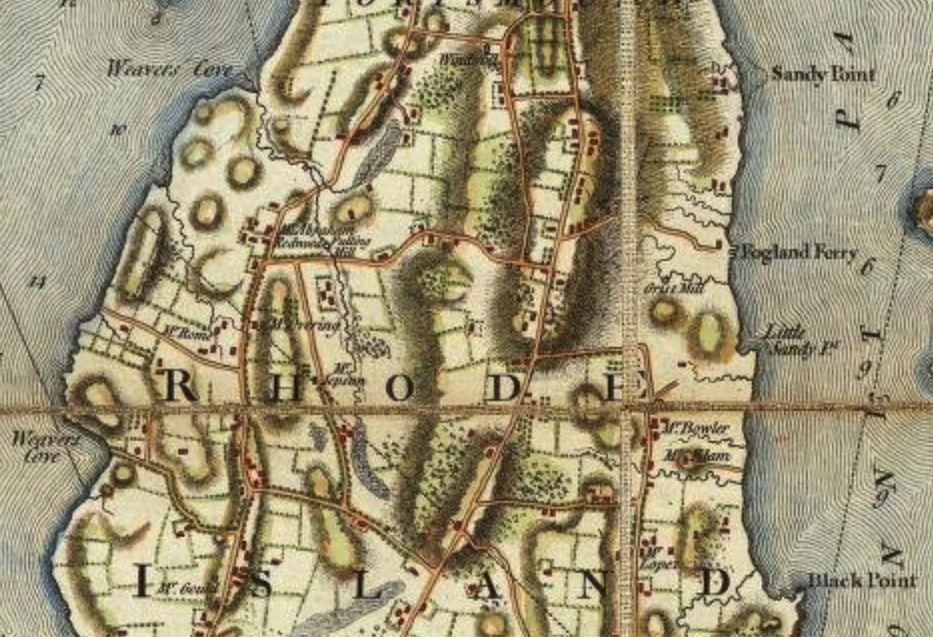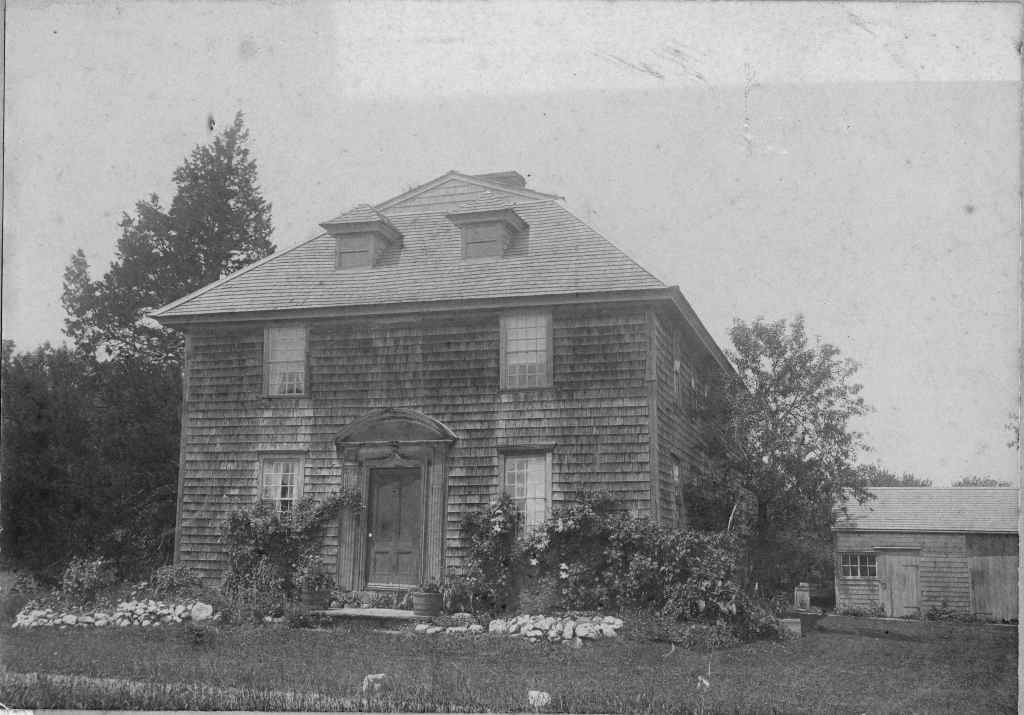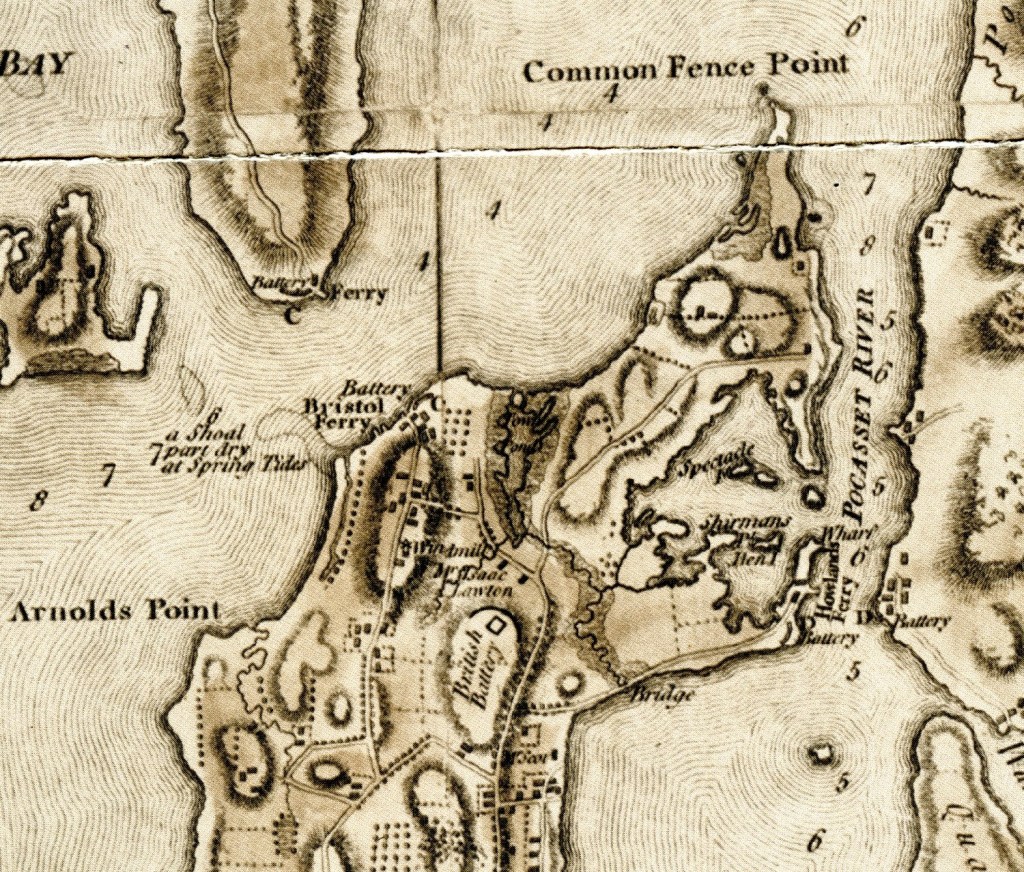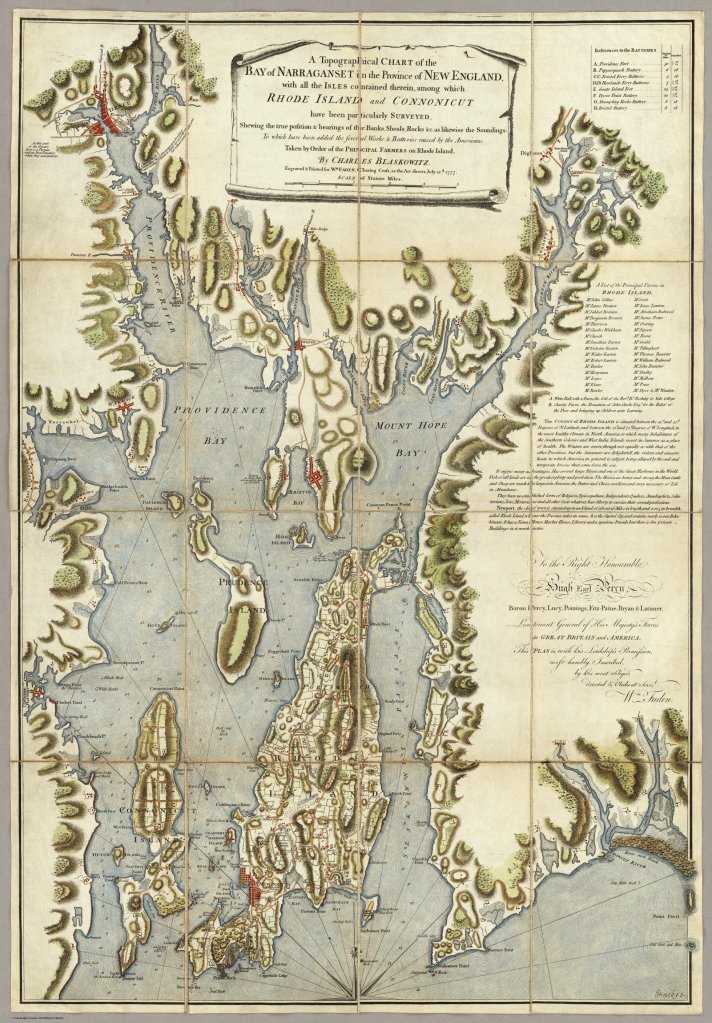In a recent trip to a museum I came across Mary Almy’s miniature portrait and journal as part of a display on American art at the Museum of Fine Arts in Houston, Texas. The two items aren’t usually viewed together. The portrait is in the Rienzi Collection in Houston and the diary is in the Redwood Library collection. Viewing those two items reminded me that Mary’s journal gives us a Loyalist view of what was happening during the British Occupation and the Battle of Rhode Island.
Mary Almy is an interesting figure in history. She was born into the Gould family in Newport in 1735. Her great grandfather, Walter Clarke, served three terms as Governor of Rhode Island. Mary married Captain Benjamin Almy in 1762. Mary was a Loyalist, but Benjamin had volunteered to serve with the militia forces that were supporting the American Continental forces. One wonders how many families on Aquidneck Island were split between Loyalist and American sympathies. Mary ran a boarding house on Thames Street in Newport. Christian McBurney in his book “Spies in Revolutionary Rhode Island” portrays Mary as hosting a Tory spy ring passing information on French movements once the French occupied Newport.
Mary’s journal is written to her husband and relates what was happening in British occupied Newport during August of 1778. Basically it tells about the fears of the coming of the French Navy and ends with the outcome of the Battle of Rhode Island. She writes to him September 2, 1778 – “I am to give you an Account of what Past during the Seige–but first Let me tell you it will be done with Spirit — for my dislike to the Nation that you call your friends..” Mary believed the Patriot cause would end with the “discredit of the Americans.”
The focus of this blog will be her entries on the Battle of Rhode Island.
Mary Almy’s Diary – I have converted this somewhat with modern spelling and punctuation.
August 22, 1778
Sent a light horse man to call the 38th back. (38th Regiment of Foot with 334 men in Newport). By this time all was horror and confusion. The Hessians overtook a Party in the West Road (West Main Road, Portsmouth) near Mr. Redwood’s farm. They pursued with violence. The other retreated with prudence leaving the roads strewn with dead bodies. The East Road (East Main Road, Portsmouth) was a scene of blood and slaughter from Cousin Almy’s down the foot of Quaker Hill. All the crossroads filled with them and they kept up a smart fire up until 2 o’clock. Then they began to bury the dead and bring in the wounded. Oh how many wretched families were made that day! It would have softened the most callous heart to see cartloads of wretched men brought in. Their wives screaming at the foot of the cart in consort with their groans. Fine youths with their arms taken off in a moment. In short it is too far beyond my description. The horrors of that day will never be quite out of the remembrance. I quitted company and hid myself to mourn in silence for the wickedness of my Country. Never was a heart more differently agitated than mine. Some of my good friends in the front of battle here and heaven only knew how many of the other Side. Instead of inquiring news or asking after a soul, a stupidity took hold of me at last. I shut myself from my family to implore heaven to protect you and keep you from imprisonment and death. Every dejected look and every melancholy countenance trembled for fear they would say – “your husband lies among the slain” or that he is wounded and a prisoner. Think you what a life I live owing to your violence of temper – which I knew would lead you to all things dangerous.
Sunday morning August 23, 1778
The Provincials encamp on the Wind Mill Hill. Little or no firing from either party. More regiments ordered out. Something great is intended if you should not slip away too soon. Constant riding from Quaker Hill every hour expecting a general battle. My whole heart is sick with melancholy story. Every hospital is crowded with wounded men. No church (services.) No appearance of anything but horror and distress. The Country people will plunder. In the midst of all the confusion some were going to eternity while others were robbing. Innocent farmers houses – death and destruction was before their eyes from every quarter until the officers heard what was doing. They directly ordered guards to every house – whose kind protection was the saving of them. And to do justice to the British, their humanity and leniency was beyond all conception to the wounded prisoners. There was a hospital on purpose for them. Nurses were chosen from amongst the inhabitants that they might have every indulgence that their unhappy situation needed – doctors whose goodness, understanding and compassion might never be forgotten. Whenever justice is done at the end of war, I hope this instance will be in your records. Night is coming on – everything I suppose will be left for daylight.
Monday August 24th, 1778
By daylight, the trampling of horses, the different sounds of voices, brought to her thoughts a poor creature who had scarcely had sleep enough to compose her distracted brain but had brought her self willing to hear the worst. Seven o’clock – a light horseman with news. They are retreated – quite gone over Howland ferry. At eight o’clock a messenger. They began to decamp early in the evening and before day. Their artillery, baggage , wounded men and part of the Army were over. At 10 o’clock Thomas Hill came in. He told me he saw you on Friday – that you desired him to let me know by daylight on Monday morning you should be at home at breakfast with a number of gentlemen. Oh, Mr. Almy. What shocking disappointment to you. Can you keep up your spirits? Heaven I hope will support you. So positive, so assured of success. And remember in all your difficulty and trials of life that when the all wise disposer of human events thinks we have been tried, then our patience is waiting. We will be amply repaid by a joyful meeting.
And a joyful meeting they must have had. After the Occupation and War Mary’s Tory leanings didn’t seem to be held against her. She continued with her boardinghouse and hosted Thomas Jefferson in 1784 and George Washington in 1790.
References
McBurney, Christian. Spies in Revolutionary Rhode Island. Charleston, History Press, 2014.
Hattendorf, John B. Mary Gould Almy’s Journal 1778. Published for the Rhode Island Society Sons of the Revolution, 2018.
